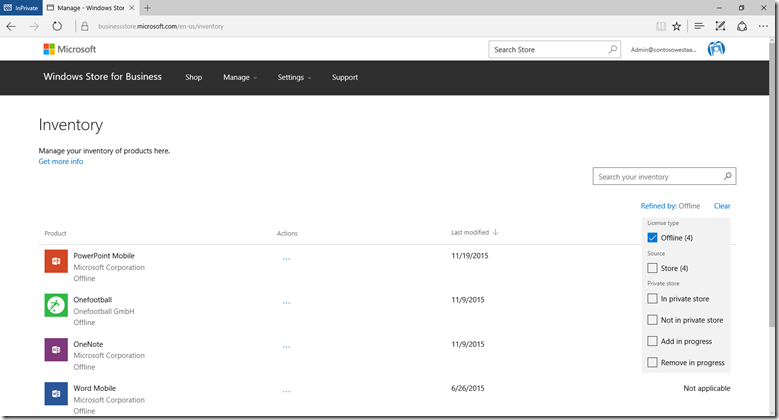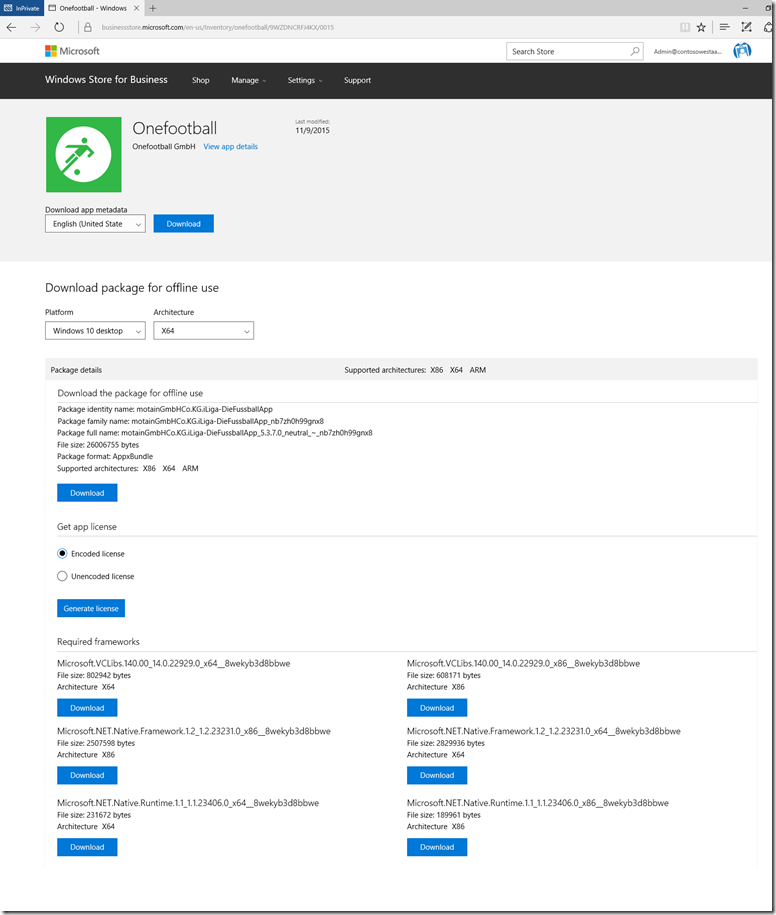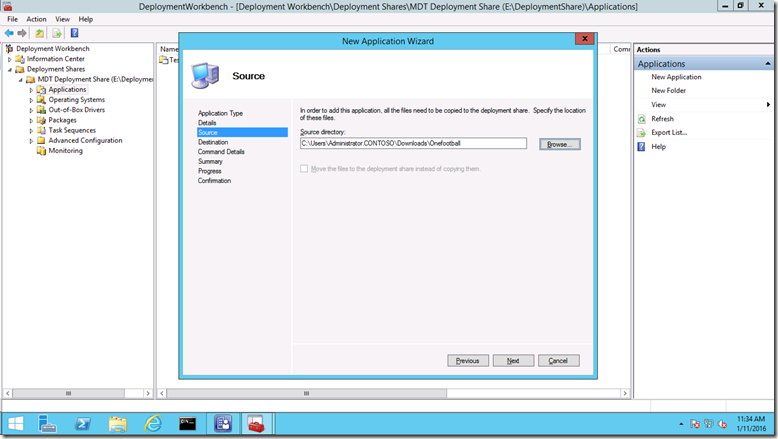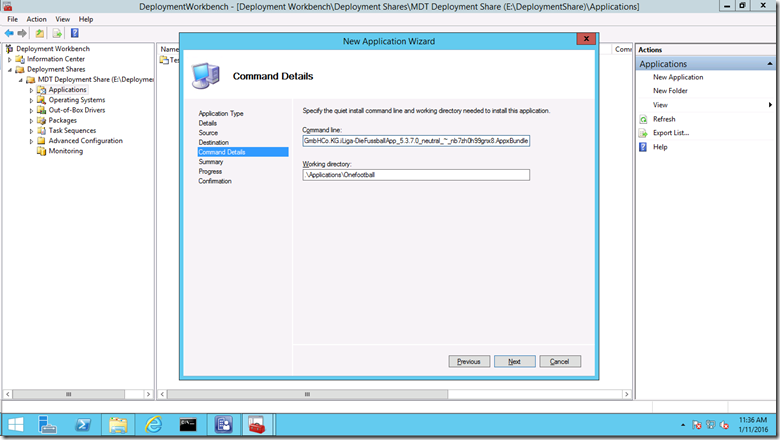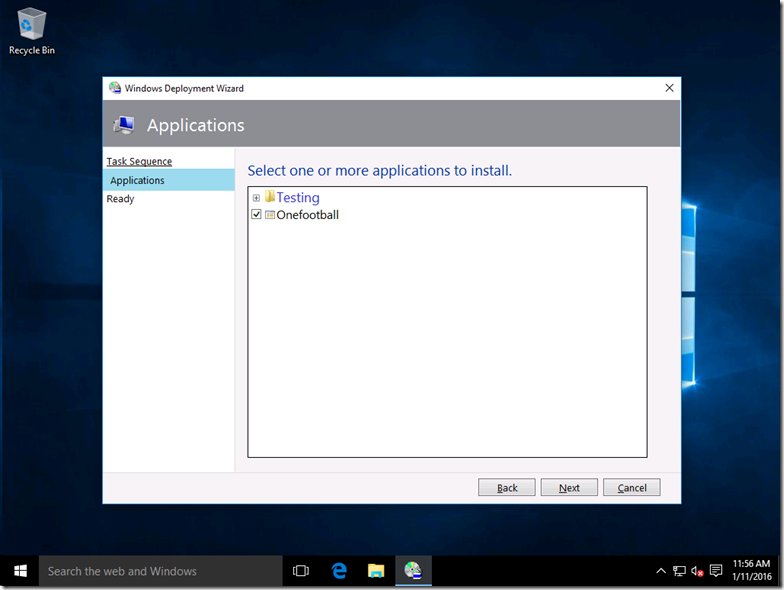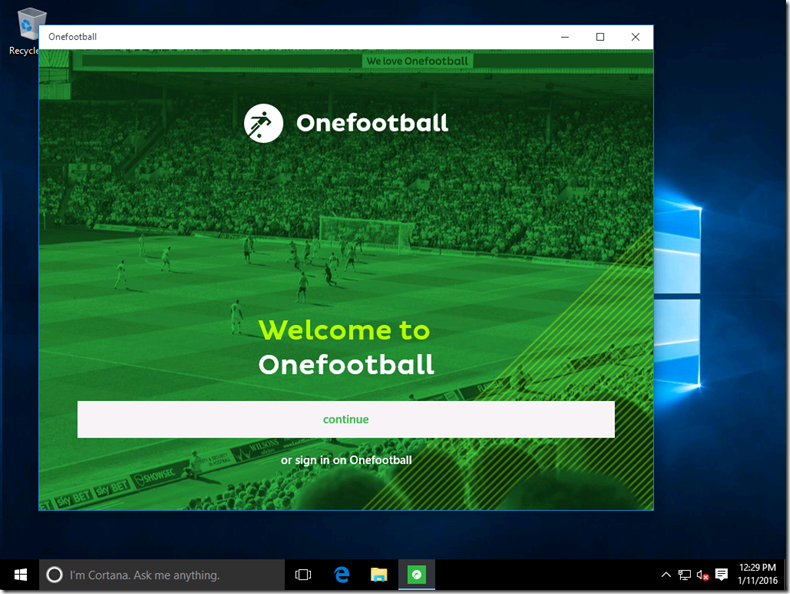Using the Windows Store for Business with MDT 2013
The Windows Store for Business was made available to everyone back in November, corresponding to the Windows 10 version 1511 feature upgrade that was released at the same time. For those that aren't familiar with the Windows Store for Business capabilities, it provides organizations the ability to acquire apps for use throughout their organizations, and in some scenarios, also to distribute those apps.
There are two types of licenses that are available through the Windows Store for Business:
- Online, tied to an Azure Active Directory account. This only supports per-user installation of the apps, and licenses are tracked and managed by the Windows Store for Business.
- Offline, where no Azure Active Directory is needed or used. This supports per-user installation (regardless of the account type) as well as per-machine provisioning (where the app automatically installs for each user when they log onto the PC), and there is no license tracking.
In the case of MDT, it supports per-machine provisioning of apps, and as of MDT 2013 Update 1 it understands how to provision apps from the Windows Store for Business. The main difference between store apps and sideloaded apps: a license file provided by the Windows Store for Business, allowing the app to be installed or provisioned on a machine, without even needing to enable sideloading.
For those of you who aren’t familiar with MDT’s ability to sideload apps, this has been in MDT since the Windows 8 timeframe, but the documentation is lacking. To summarize, you need to have the app files, including dependencies, in the needed folder structure. For example, you could import this folder structure into MDT as a new application, specifying the name of the main .appx file as the command line for the app:
- MyApp
- MyApp.appx
- Dependencies
- x86
- MyDependency.appx
- x64
- MyDependency.appx
- x86
After importing this into MDT (creating an app with source files, specifying the location of the MyApp folder, and specifying a command line of “MyApp.appx”), you could then select that app for provisioning during a task sequence; MDT would automatically create the needed DISM command line to provision the app so that you don’t need to work out that very long command line yourself.
So where does this folder structure come from? Simple, it’s what Visual Studio creates when you build an app. So your developers can just provide you with a copy of that output folder and you’re set. But there’s a little more work needed with the Windows Store for Business: It will provide you all the files that you need, but you need to download them individually and then place them into the needed folder structure manually, before adding the result to MDT.
Let’s look at a real example. Once I sign into the Windows Store for Business from https://www.microsoft.com/business-store, I can mange my inventory of apps and filter it to just the “offline” licensed apps, since these are the ones I could put into my MDT image:
Let’s assume I want everyone to have Onefootball when they first log into Windows 10. (It could happen, maybe they work for a European football club.) When you select that app, you can see the individual files that you need to download, including a license file:
So download the package itself (selecting the x64 architecture, so that you get the files for x86 and x64), an unencoded license (XML file), and each of the required frameworks. Arrange them into a folder structure like I described above:
with three .appx dependency files in each of the x86 and x64 folders. Then import that into MDT as a new app with source files:
specifying the name of the .appx file as the command line (the rest of the name scrolls off the left side for this app):
Then when deploying you can select the app:
Then once I log on as a normal user (not the Administrator) the app shows up on the Start menu:
and launches just fine:
So you can do that with any offline app available in the Windows Store for Business, just like you can do it with any line of business app. (MDT will enable sideloading automatically for the LOB app, but that isn’t necessary for the Windows Store app, as the license file means sideloading isn’t needed.)
To make this process easier, the Configuration Manager and Intune teams, as well as other management tool vendors, are working on leveraging the Windows Store for Business APIs to make this whole process as easy as checking a few boxes, so stay tuned for that.
